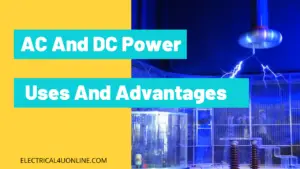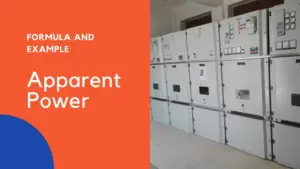As an electrical engineer, you are likely familiar with the concept of power in electrical systems. However, power is not a single, straightforward quantity, and there are several different types of power that are relevant in different contexts.
In particular, it is important to distinguish between apparent power, reactive power, and real power. These three types of power are interrelated, but each has its own distinct properties and uses.
Table of Contents
Real Power: The Power of Energy Transfer
Real power is the power that is actually transferred or transformed in a circuit or system. It is also sometimes called active power, because it is associated with the actual flow of energy in a system. Real power is measured in watts (W), and it is typically the most important type of power in practical applications.
Real power represents the actual energy transfer in a circuit. For example, if you have a light bulb that draws 100 watts of power, then the real power associated with that bulb is 100 watts. This means that the bulb is actually consuming energy at a rate of 100 watts, and this energy is being transformed into light and heat.
Reactive Power: The Power of Fields
Reactive power, on the other hand, is the power that is required to establish and maintain the electric and magnetic fields associated with the flow of alternating current (AC) in a circuit.
It is sometimes called imaginary power, because it is not directly associated with the transfer or transformation of energy, but rather with the storage and release of energy in the form of electric and magnetic fields.
Reactive power is measured in volt-amperes reactive (VAR), which is a unit that combines voltage and current. Reactive power is necessary in AC circuits because the current and voltage waveforms are not always in phase with each other.
In particular, the current waveform may lag or lead the voltage waveform, depending on the characteristics of the circuit. This phase difference creates reactive power, which is required to establish and maintain the fields that allow the current to flow.
Reactive power represents the energy stored and released by the fields in a circuit. For example, if you have an AC motor that draws 100 watts of real power, but also requires 50 VAR of reactive power to operate, then the total power associated with the motor is 100 + 50j VA, where j represents the imaginary unit.
The real part of this complex quantity (100 VA) represents the actual power consumed by the motor, while the imaginary part (50 VAR) represents the reactive power required to establish and maintain the electric and magnetic fields associated with the motor’s operation.
For more information read my detailed article about reactive power.
Apparent Power: The Total Power
Finally, there is apparent power, which is the total power that is flowing in a circuit or system, regardless of whether it is actually being consumed or transformed. Apparent power is measured in volt-amperes (VA), which is simply the product of the voltage and current in a circuit.
Apparent power is a combination of real power and reactive power, and it can be thought of as the total power that is supplied to a circuit or system. In some cases, the apparent power may be greater than the real power, because of the presence of reactive power. This can lead to inefficiencies and other problems in power systems, which is why it is important to understand and manage all three types of power. Read also my article 7 common questions about apparent power.
key differences between apparent, real, and reactive power:
- Apparent Power: Apparent power (S) is the total power that is supplied to an electrical system. It is the product of the voltage and the current in an AC circuit. Apparent power is measured in volt-amperes (VA) and represents the total power that is drawn by a load.
- Real Power: Real power (P) is the actual power that is consumed by a load. It is the part of the apparent power that performs useful work. Real power is measured in watts (W) and represents the power that is converted into useful energy, such as heat or light.
- Reactive Power: Reactive power (Q) is the power that is stored and released by capacitors and inductors in an electrical system. It is the imaginary part of the apparent power that does not perform useful work. Reactive power is measured in volt-amperes reactive (VAR) and represents the power that is required to maintain the voltage and current in an AC circuit.
In summary, real power is the useful power that is consumed by a load, while reactive power is the power that is required to maintain the voltage and current in an AC circuit.
Apparent power is the total power that is supplied to an electrical system and is the sum of real and reactive power.
Understanding these three types of power is important for optimizing the performance of electrical systems and ensuring efficient use of energy.
Don’t Leave Empty-Handed!
Install my Free Android App on Google Play:
Electrical Cables Most Common Tables “Cables Tables”
And, my Electrical Calculations App “Fast Electrical Calculator”
Discover more great content by subscribing to My channel
Looking to stay ahead of the game in the world of electrical engineering? Subscribe to my YouTube channel and gain access to exclusive content you won’t find anywhere else!
The staff I recommend
(Amazon Affiliate Links to products I believe are high quality):
- Economy 120 Volt/60Hz AC Power Source – Step-Down Voltage & Frequency Converters 1800W
- UNI-T Digital Multimeter Tester UT139C
- 50-Amp Extension Cord for RV “100ft”
- Voltage Stabilizer 110/220v
- Hair Dryer “best selling“
- TOSHIBA EM131A5C-BS Countertop Microwave Ovens
Disclaimer: This contains affiliate links to Amazon products. I may earn a commission for purchases made through these links.



